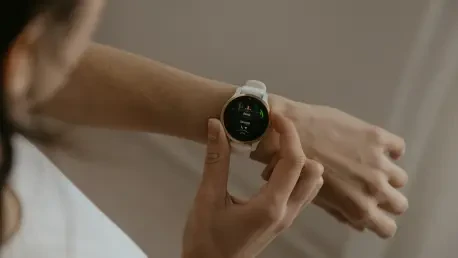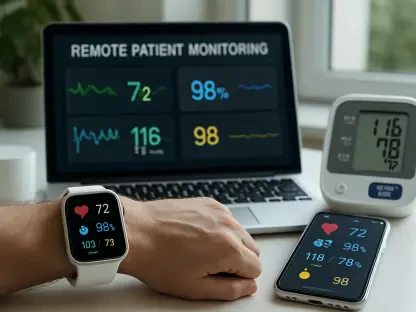In today’s fast-paced world, where staying on top of health and fitness has become a priority for so many, wearable technology offers a powerful way to track progress, monitor well-being, and push personal limits. Among the leading brands in this space, Whoop and Garmin stand out as titans, each with a distinct approach to helping users achieve their goals. Whether the aim is to optimize recovery, crush a marathon, or simply maintain a balanced lifestyle, choosing the right device can make all the difference. This deep dive into the two brands explores their unique features, pricing structures, design philosophies, and tracking capabilities to provide clarity for anyone standing at this crossroads. Both companies have built loyal followings, but their products cater to slightly different needs—Whoop with its laser focus on health metrics and Garmin with its broader, fitness-driven appeal. Navigating the wearable market can feel overwhelming with endless options and technical jargon, yet understanding what each brand prioritizes simplifies the decision. By breaking down the key aspects of these devices, from how they fit into daily routines to how they handle data, this analysis aims to guide users toward a choice that aligns with their specific aspirations. Let’s delve into the details and uncover which wearable might be the perfect companion for enhancing fitness or wellness journeys.
Breaking Down the Cost Structures
When deciding between Whoop and Garmin, the financial aspect plays a significant role in shaping user preference. Whoop employs a subscription-based model, requiring an annual commitment with fees ranging from $169 to $349 depending on the selected plan. These tiers grant access to the app, which is the heart of the experience, along with varying device versions and accessories like wireless chargers or customizable bands. A one-month trial with an earlier model is also available for those hesitant to dive in fully. This structure ensures continuous updates and support, but the recurring cost might deter individuals who prefer to avoid ongoing expenses. For some, the idea of a service-based wearable feels modern and dynamic, aligning with a mindset of constant improvement through tailored insights. However, it’s worth noting that without the subscription, the device’s functionality is severely limited, making the fee essentially mandatory for full use.
In contrast, Garmin follows a more traditional purchase model that appeals to those favoring a one-time investment. Their range of smartwatches and trackers spans from an accessible $149.99 to a premium $1,199.99, catering to a wide spectrum of budgets and needs. No mandatory subscription ties users down, though an optional add-on plan exists for enhanced features. This flexibility allows buyers to own their device outright without worrying about future costs, which can be a significant relief for those on a fixed budget or skeptical of subscription fatigue. The upfront cost might seem steep for high-end models, but it often includes a robust set of features that don’t require additional payments to unlock. This fundamental difference in payment philosophy—recurring versus singular—sets the tone for how each brand positions itself in the wearable market, often influencing user perception before they even try the product.
Design Philosophies and User Interaction
The physical design and interaction style of Whoop and Garmin devices reveal stark contrasts that cater to distinct lifestyles. Whoop’s strap is intentionally minimalist, lacking a screen to eliminate distractions and encourage users to engage with data solely through the accompanying app. This choice reflects a philosophy centered on uninterrupted health monitoring, ensuring the focus remains on personal insights rather than constant notifications. A standout feature is the wireless PowerPack, which allows charging without removing the device, preventing any gaps in data collection. This design suits individuals who value discretion and don’t need immediate visual feedback on their wrist. The lightweight, subtle build also makes it comfortable for 24/7 wear, blending seamlessly into daily life without drawing attention.
Garmin, by comparison, embraces a multifunctional design with vibrant displays that provide real-time data access directly on the wrist. This eliminates the need to reach for a smartphone during activities like running or cycling, offering instant stats at a glance. Battery life is another strong point, with some models lasting up to 29 days on a single charge, and select devices even incorporating solar charging for extended use in outdoor settings. However, charging requires removing the watch, which can briefly interrupt tracking. The bold, versatile aesthetic of Garmin smartwatches doubles as everyday wear, appealing to users who want a device that transitions from gym to office. This interactive, feature-rich approach contrasts sharply with Whoop’s understated ethos, highlighting how design can shape the overall experience based on user expectations.
Accuracy and Tracking Specializations
When it comes to tracking health and fitness metrics, both Whoop and Garmin have earned reputations for reliability, though their strengths lie in different areas. Whoop excels particularly in sleep tracking, delivering detailed insights that often resonate with how users feel upon waking. Unique metrics such as recovery and strain scores offer a personalized snapshot of daily readiness, helping to guide decisions about rest or exertion. However, its exercise tracking can be inconsistent, sometimes failing to capture lower-intensity activities accurately. Additionally, the absence of built-in GPS means reliance on a paired smartphone for location data, which may frustrate those who prioritize precision during outdoor workouts. For individuals focused on holistic wellness over athletic performance, Whoop’s deep health analytics provide a compelling edge that’s hard to match.
Garmin, conversely, shines in fitness tracking with exceptional accuracy, especially in premium models equipped with advanced multi-band GPS. This makes it a top choice for runners, cyclists, and outdoor adventurers who need reliable location data. Beyond that, comprehensive morning and evening reports cover sleep and recovery, while features like VO2 Max estimates offer insights into cardiovascular endurance. The breadth of tracking capabilities ensures users get a well-rounded view of both health and fitness without needing multiple devices. While Garmin may not delve as deeply into recovery metrics as Whoop, its versatility appeals to a wider audience seeking an all-in-one solution. The focus on precise, activity-driven data positions Garmin as a powerhouse for those with active, performance-oriented goals.
Target Audiences and Lifestyle Fit
Understanding the ideal user base for each brand sheds light on how well they integrate into different lifestyles. Whoop targets individuals who prioritize health insights over fitness performance, making it a strong fit for those obsessed with recovery, sleep quality, and overall well-being. The screenless design and continuous data collection cater to users who value uninterrupted tracking and don’t mind diving into app-based analytics for feedback. However, the limited exercise tracking might leave fitness enthusiasts wanting more, often leading them to pair Whoop with another device for comprehensive workout data. This niche focus on health monitoring aligns with a growing trend of wellness beyond traditional metrics, appealing to a specific but dedicated audience.
Garmin, by contrast, casts a wider net, attracting everyone from casual users to serious athletes with its all-encompassing smartwatches. The ability to view metrics on-device, paired with extensive fitness tracking and smart features, makes it a standalone solution for most needs. Whether it’s tracking a morning jog or navigating daily tasks with notifications, Garmin adapts to varied routines effortlessly. Its appeal lies in being a practical, everyday wearable that doesn’t require supplementary tools, fitting seamlessly into active and multifaceted lives. This broad accessibility ensures Garmin resonates with users seeking balance between fitness, health, and convenience, highlighting how lifestyle alignment often dictates the better choice between these two brands.
Making the Right Choice for Future Goals
Reflecting on the comparison, it’s evident that both Whoop and Garmin have carved out distinct paths in the wearable tech landscape, each addressing unique user priorities. Whoop stands as a beacon for those who place health insights at the forefront, offering unparalleled sleep and recovery data through a subscription-driven, minimalist design. Garmin, meanwhile, captures the attention of fitness enthusiasts and casual users alike with its versatile, one-time-purchase smartwatches that blend precision tracking with everyday functionality. For anyone weighing these options, the decision hinges on whether the focus is deep wellness analytics or broad performance metrics. Moving forward, potential buyers should consider testing both approaches—perhaps starting with Whoop’s trial or exploring Garmin’s entry-level models—to gauge personal fit. Aligning the device with long-term aspirations, whether that’s mastering recovery or hitting new athletic milestones, ensures the chosen wearable becomes a true partner in progress. As technology continues to evolve, staying open to hybrid solutions or pairing devices might also offer the best of both worlds for those with diverse needs.









